Are you familiar with the 10 plants poisonous to horses that may be in your pasture? Can you identify dangerous vegetation while on the riding trail? Unfortunately, potentially poisonous plants are more common than most people realize. In fact, there are hundreds of toxic flowers, shrubs, ferns, weeds, and trees in North America. However, there are simple ways to help protect your horse from toxic plants and your horse. Thankfully, horses usually avoid toxic plants. After all, most poisonous plants are distasteful. Horses are also much larger than dogs, cats, and humans. So where a nibble of some plants may instantly poison you or your other pets, horses have a little leeway. In other words, your horse would have to consume a significant amount of certain less toxic plants to feel any effects. However, extremely hungry horses have been known to eat poisonous plants despite their horrid taste. In addition, high levels of stress and vitamin or nutrient deficiencies could cause your horse to sample toxic plants. For that reason, ensure your horse has quality forage and feed. But beyond that, accidents do happen. Well intentioned neighbors have dumped grass clippings over pasture fences as a horse treat, unaware that the yew clippings mixed with the grass are extremely toxic to animals.
Plant Poisoning Symptoms
The type and amount of plant eaten dictates the symptoms. Plants can affect the respiratory, gastrointestinal, nervous, or cardiovascular systems or the liver, blood and/or kidneys. Oftentimes it is difficult to diagnose plant poisoning in a horse because many of the symptoms mimic those of other conditions. However, many plant poisonings are serious and potentially fatal. If you suspect your horse has consumed a toxic plant, contact your equine veterinarian immediately. Some symptoms to watch for include:
- Disorientation Unprovoked Frenzy
- Tremors Muscle Spasms
- Difficulty Swallowing Colic
- Fluctuating Heart and Respiratory Rates
- Excessive Salivation
- Abnormal Amounts or Colors of Urine
Poisonous Plants to Avoid
Some toxic plants pose a serious threat to your horse. Just a few bites of certain plants can greatly sicken or even kill your horse. Other plant toxins have the ability to build up over time and slowly poison your horse. As such, it is very important to understand which plants to steer clear from on the riding trail and eradicate from your pasture. However, just because a plant is not listed does not mean it is safe for your horse to eat. If you have any questions consult your equine veterinarian or contact your local Department of Agriculture office.
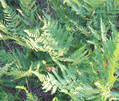
1. Bracken Fern is a perennial fern with triangular leaves and black horizontal roots. It can grow up to three feet high. It is usually found in clumps in woodland areas and moist open areas across the United States. Signs of consumption include weight loss, depression, lack of coordination, muscle twitching, and a weak and fast pulse.
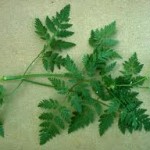
2. Poison Hemlock is a perennial weed with toothed, fern-like leaves and clusters of small white flowers in late summer. A single plant has many stems. It has a large white parsnip-like root and is found along roadsides and in open, uncultivated areas across North America. Signs of consumption include nervousness, tremors, and a lack of coordination, that progress to depression, a weakened heart and respiratory rate, and possibly colic.
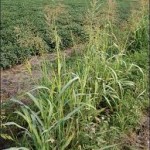
3. Johnsongrass/Sudan grass are both coarse-stemmed grasses with broad, veined leaves that can grow to six feet in height. Johnsongrass is predominant in southern climates, while Sudan grass is cultivated across North America as a forage plant. Sudan grass can cause cystitis (inflammation of the urinary bladder). Signs of poisoning may include bladder paralysis that causes dribbling or bloody urine and may progress to paralysis of the hind limbs.
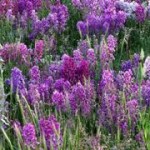
4. Locoweed is a perennial weed with short stems and multiple leaves that grow in tufts. Some have silvery hairs. The stalks on which the white or purple flowers bloom have no leaves. They are found throughout the western and southwestern United States. Signs of consumption include strange behaviors such as excessive head bobs, exaggerated gaits, or staggering that progresses to a horse’s collapse. Horses may also become depressed, lose weight, and mares may abort their foal.
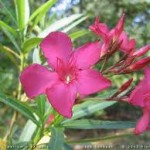
5. Oleander is an evergreen shrub with elongated, thick leathery leaves. It can grow to the size of a small tree. Its white, pink, or red flowers grow in large clusters at the end of branches. It grows across the southern states and can often be found as a potted plant in northern climates. Signs of consumption include colic, difficulty breathing, tremors, irregular heart rate, and either an elevated or slowed pulse. Death can result from heart failure.
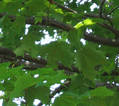
6. Red Maple Trees are medium-sized trees. Juvenile trees have smooth, pale gray bark. As the tree ages the bark turns dark and broken. In the spring and summer the leaves are green with whitish undersides and bright red stems. In the fall, the leaves turn bright red. They are found across North America. Signs of consumption include lethargy, refusal to eat, dark or discolored (red, brown, or black) urine, discolored gums and mucous membranes, increased respiratory rate, rapid heart rate, and dehydration. It may also cause a pregnant mare to abort.
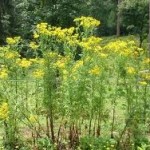
7. Tansy Ragwort is a multi-stem weed with alternating leaves that produce clusters of small, daisy-like yellow flowers. It grows primarily in the coastal northwest United States and New England. Signs of toxicity may not appear until 6 or more months after the plant is consumed. These signs may include lethargy, photo-sensitization, and digestive disorders. Signs may not be evident until signs of liver failure occur, including loss of appetite, weight loss, and jaundice.
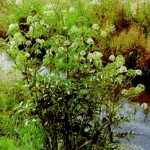
8. Water Hemlock is one of the most poisonous plants. It is a perennial weed with jointed stems (often with purple spots), multiple toothed leaflets, and small, white flowers that grow in umbrella-shaped clumps at the end of erect, hairless, clustered stems. It is common in marshy areas of meadows and along waterways across the United States. Most poisonings occur in the spring before the flowers or even leaves appear, since the roots are also poisonous. Signs of consumption include excessive salivation, dilated pupils, and nervousness that progress to difficulty breathing, loss of heart and muscle function, or convulsions and seizures.
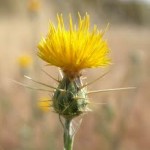
9. Yellow Star Thistle is an annual weed that forms a spherical plant up to three feet tall. It has round, yellow flowers surrounded by stiff spines up to 3/4″ long. They are predominant across the western United States along roadsides and in cultivated fields and pastures. Signs of consumption include tensed facial muscles and an inability to drink or bite or chew food that leads to weight loss and possibly death.
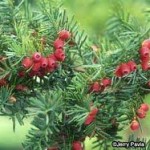
10. Yew is a woody evergreen shrub with closely spaced, flat, needlelike leaves. It has yellow or bright red berries that are soft and juicy with a hole in the end where dark seeds are visible. They are common ornamental plants across North America. Consumption usually results in sudden death. However, animals found alive are usually trembling, colicky, have difficulty breathing, and have a diminished heart rate. —
Poisonous plant images and information are courtesy of the United States Department of Agriculture, Agricultural Research Services and the American Society for the Prevention of Cruelty to Animals.